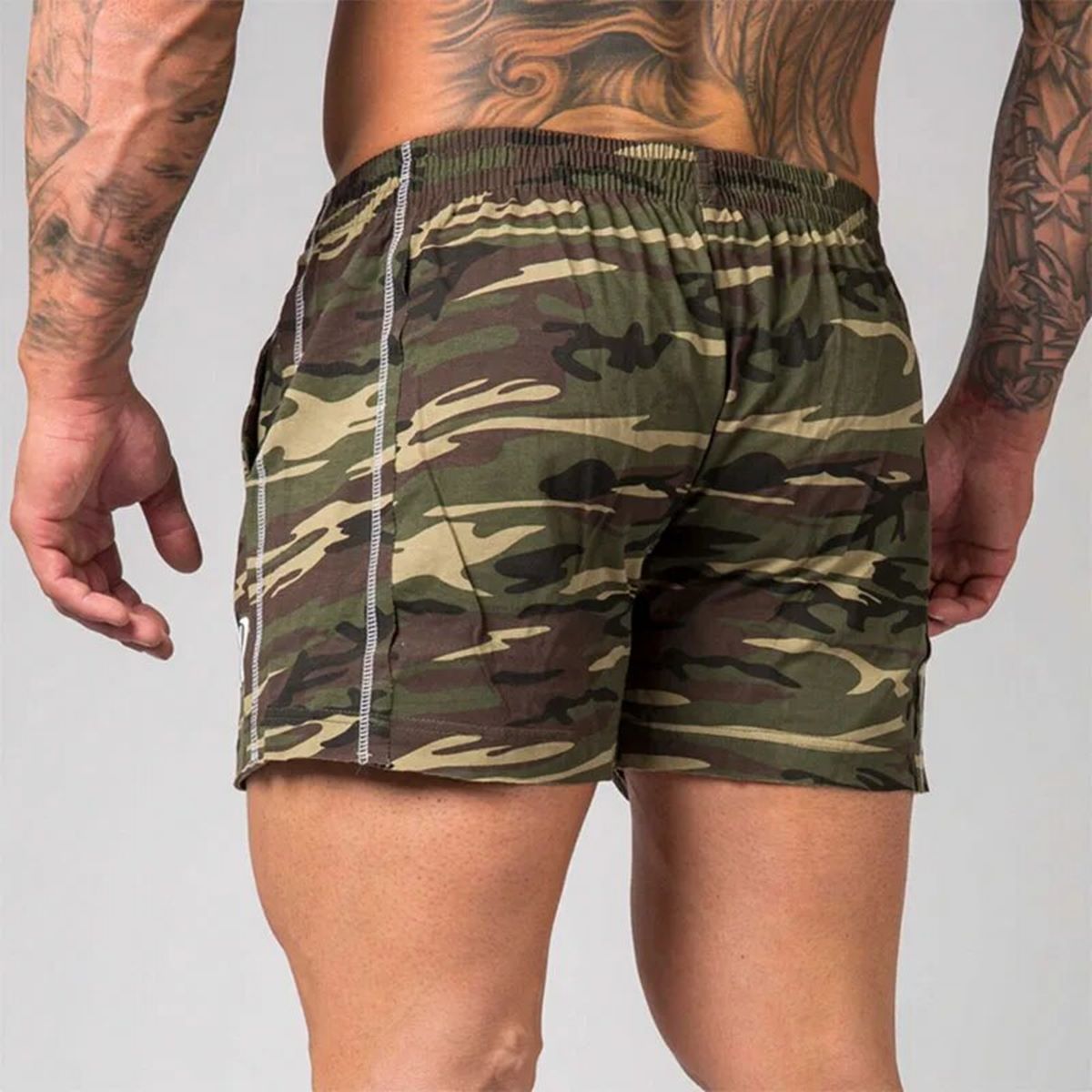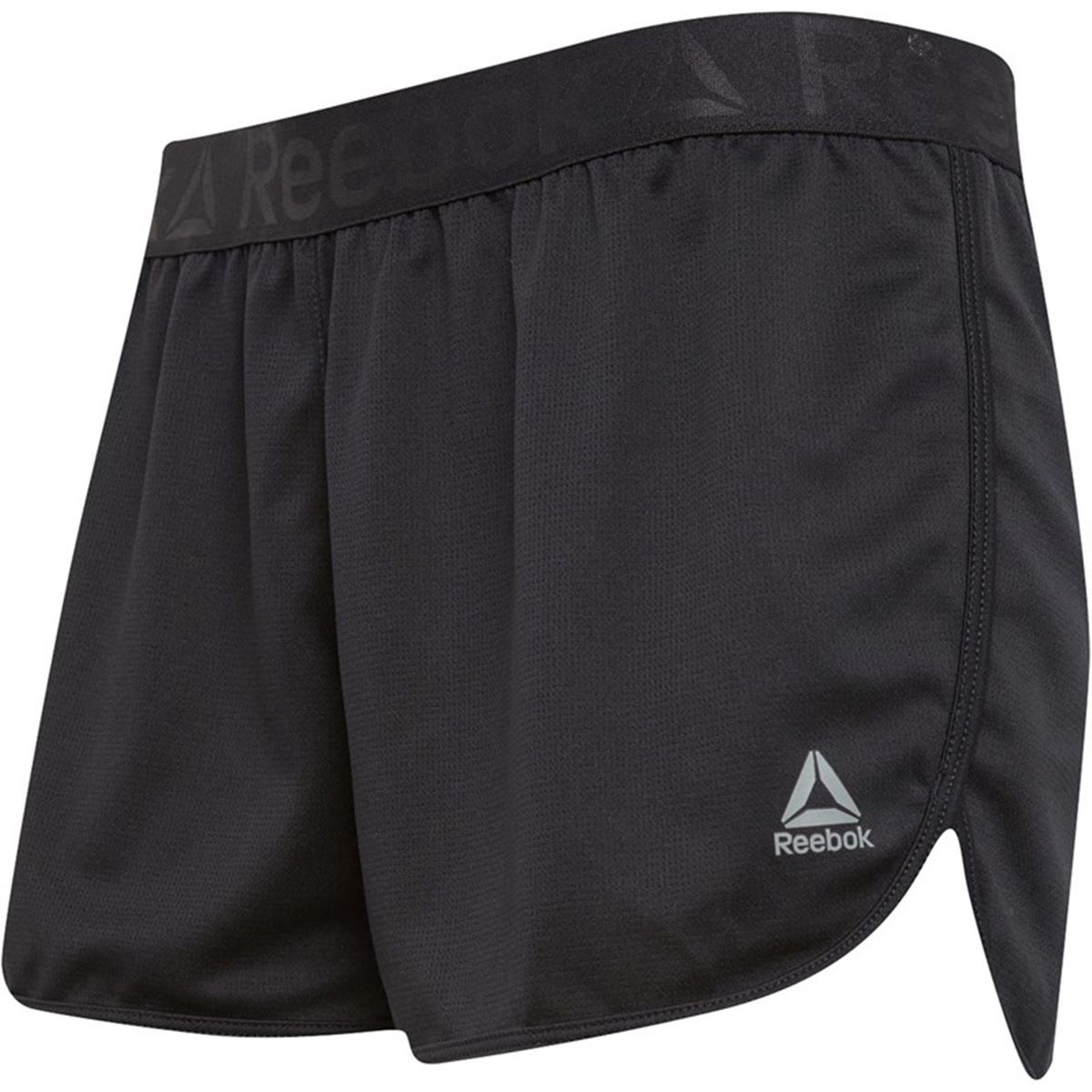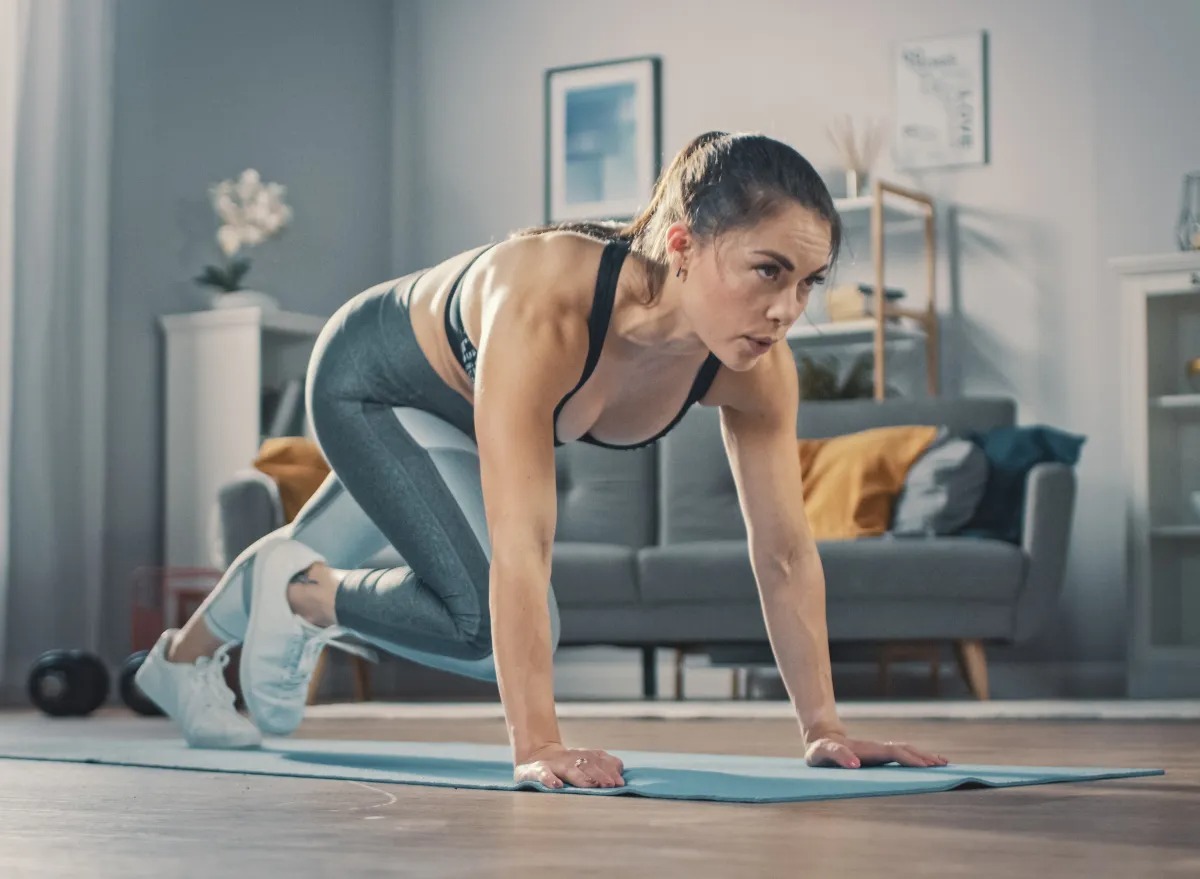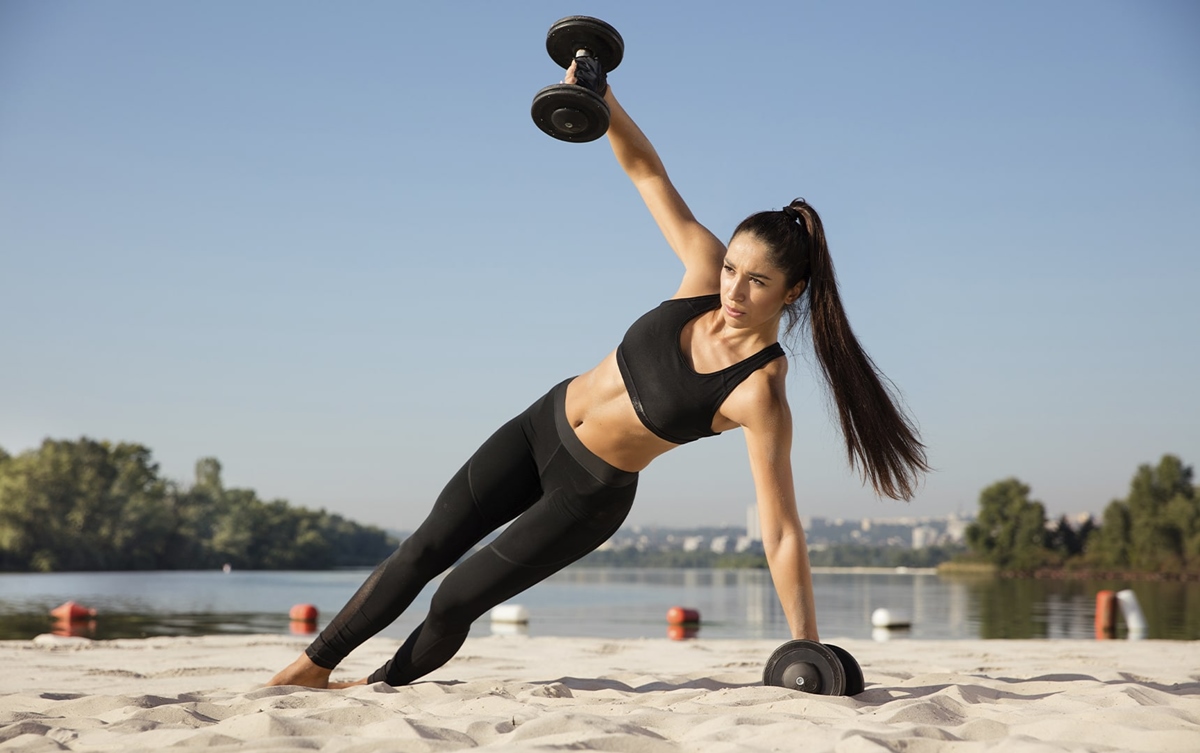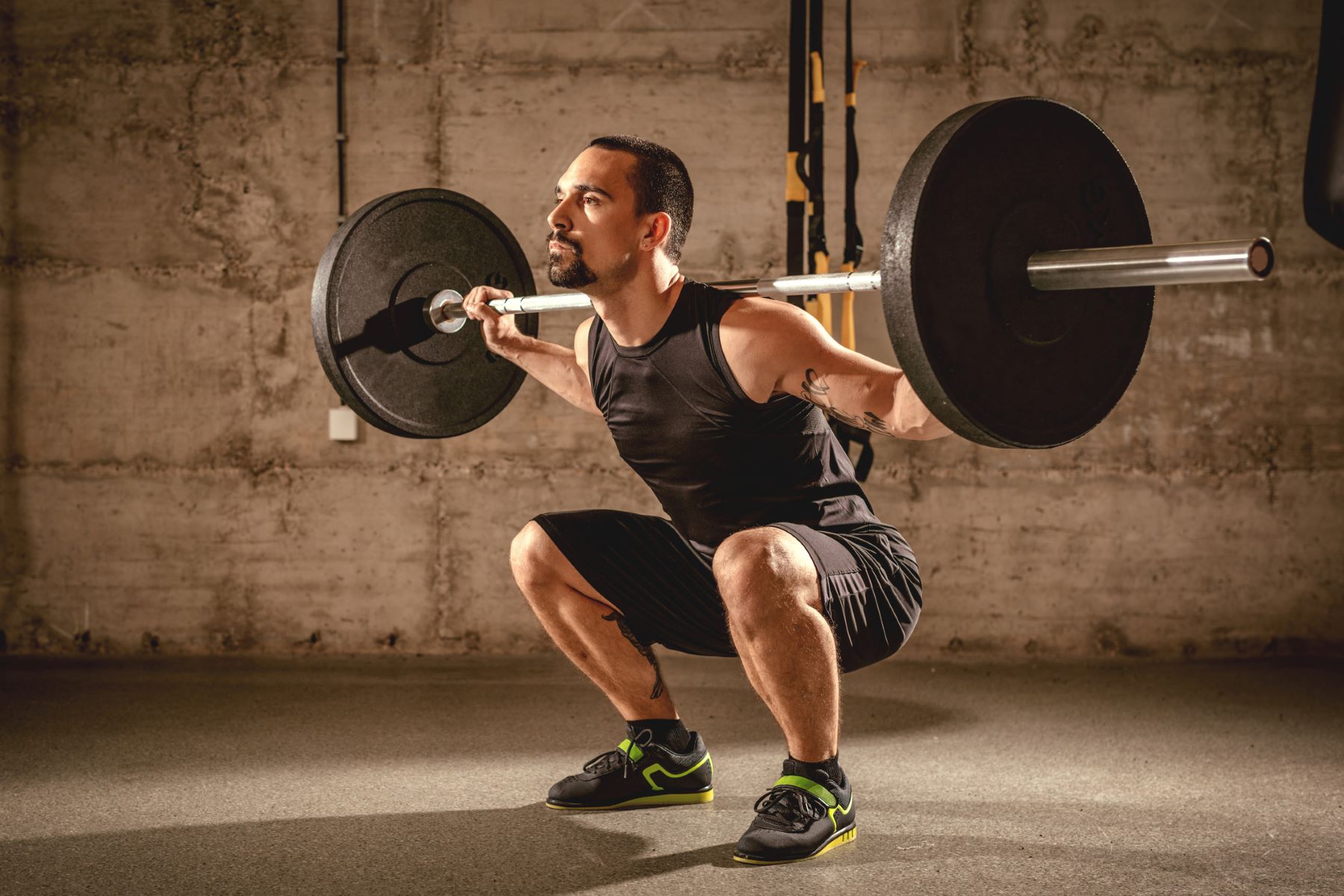

Featured
What Do Squats Workout
Modified: January 2, 2024
Discover the benefits of squats and the muscle groups they target. Improve your strength and tone featured muscles with this popular exercise.
Introduction
Welcome to the world of squats! Squats are one of the most effective and versatile exercises that can have a significant impact on your overall fitness. Whether you’re a beginner or an experienced fitness enthusiast, squats can be incorporated into your routine to help you achieve your fitness goals.
Known as a compound exercise, squats engage multiple muscle groups simultaneously, making them a great choice for building strength, improving balance, and enhancing overall body functionality. This article will delve into the wonderful world of squats, exploring their benefits, the muscles they target, proper form, variations, common mistakes to avoid, and essential tips for a successful squat workout.
Squats are a functional movement pattern that mimics everyday activities like sitting down and standing up. By incorporating squats into your workout routine, you can improve your ability to perform these daily tasks with ease, while also reaping the benefits of a challenging and rewarding exercise.
Whether your goal is to build muscle, lose fat, improve athletic performance, or simply enhance your overall fitness, squats are an exercise that should not be overlooked. As a weight-bearing exercise, squats can also contribute to the health and density of your bones, making them a great choice for individuals of all ages.
So, let’s dive into the wonderful world of squats and discover how this exercise can help you achieve your fitness goals, strengthen your muscles, and transform your body.
Benefits of Squats
Squats offer a wide range of benefits that make them a must-have exercise in any fitness routine. Here are some of the key advantages of incorporating squats into your workouts:
- Builds Lower Body Strength: Squats are renowned for their ability to strengthen and tone the muscles in your lower body. They target the quadriceps, hamstrings, glutes, and calves, helping you develop strong and well-defined legs.
- Improves Core Strength: Squats engage the muscles in your core, including the abs, obliques, and lower back, to stabilize your body during the movement. This results in increased core strength and stability.
- Enhances Functional Fitness: As a compound movement, squats mimic everyday activities like sitting down, picking up objects, or climbing stairs. By incorporating squats into your workouts, you can improve your ability to perform these tasks with ease.
- Increases Calorie Burn: Squats are a highly effective calorie-burning exercise. They stimulate multiple muscles, which promotes higher energy expenditure during and after your workout, contributing to weight loss and improved body composition.
- Boosts Athletic Performance: Squats are a staple exercise for athletes of all disciplines. They help improve speed, explosiveness, and power, making you a stronger and more effective performer in your chosen sport.
- Improves Balance and Coordination: Squats require a good sense of balance and coordination as you lower your body down and rise back up. Regularly performing squats can enhance these skills, leading to improved overall body control.
- Increases Bone Density: As a weight-bearing exercise, squats put stress on your bones, stimulating bone growth and density. This can help prevent conditions like osteoporosis and improve overall bone health.
- Enhances Posture: Squats engage the muscles of the upper back, shoulders, and core, which can lead to improved posture and a reduction in back pain caused by poor alignment.
These are just a few of the many benefits that squats offer. Whether you’re looking to build strength, improve athleticism, burn calories, or enhance your overall functional fitness, incorporating squats into your workout routine can help you achieve your goals.
Muscles Targeted by Squats
Squats are a compound exercise that engage multiple muscle groups throughout your body. Understanding the specific muscles targeted by squats can help you better tailor your workouts and focus on areas that you want to develop. Here are the primary muscles targeted by squats:
- Quadriceps: The quadriceps, located in the front of your thigh, are the main muscles worked during squats. These muscles are responsible for extending your knee and straightening your leg as you rise up from the squat position.
- Hamstrings: The hamstrings, located at the back of your thigh, act as stabilizers during squats. They assist in knee flexion and play a crucial role in maintaining balance and stability throughout the movement.
- Glutes: The glutes, which consist of the gluteus maximus, gluteus medius, and gluteus minimus, are the largest muscles in your buttocks. Squats target and strengthen these muscles, helping to shape and lift your rear end.
- Calves: Your calf muscles, specifically the gastrocnemius and soleus, are activated during squats to help stabilize your lower leg as you descend and ascend during the movement.
- Core Muscles: The muscles in your core, including the abs, obliques, and lower back, are engaged to stabilize your torso and maintain proper alignment during squats. This helps improve overall core strength and stability.
- Lower Back: The muscles of the lower back, including the erector spinae, work to maintain an upright posture during squats. They assist in stabilizing the spine and preventing excessive forward or backward leaning.
- Upper back and Shoulders: Squats require the engagement of the upper back and shoulder muscles to help support the weight of the barbell or dumbbells during weighted squats. This can help improve posture and strengthen the muscles of the upper body.
By targeting these muscle groups, squats provide a comprehensive lower body workout while also engaging the core and helping to improve overall stability and balance. Incorporating different squat variations and adding resistance can further intensify the muscle activation in specific areas.
Keep in mind that the specific muscle activation during squats can vary depending on factors such as your form, range of motion, and additional equipment used. It’s also important to note that individual muscle activation can vary between individuals due to factors such as muscle imbalances or individual biomechanics.
Now that you have a better understanding of the muscles targeted by squats, you can effectively incorporate this exercise into your routine to develop strength, improve muscle tone, and achieve a well-rounded physique.
Proper Squat Form
Performing squats with proper form is essential to maximize effectiveness, prevent injuries, and target the intended muscle groups. Here is a step-by-step guide on how to perform squats with correct form:
- Set Up: Start by standing with your feet shoulder-width apart. Point your toes slightly outward to accommodate your natural hip and ankle mobility. Position the barbell across your upper back and shoulders, or hold dumbbells at your sides for added resistance.
- Engage Your Core: Before initiating the squat, engage your core muscles by drawing your belly button towards your spine. This helps stabilize your spine and maintain proper alignment throughout the movement.
- Initiate the Descent: Begin the squat by pushing your hips back and bending your knees. Imagine sitting back into an imaginary chair. Keep your chest lifted, back straight, and your weight distributed evenly on your feet.
- Lower your Body: Continue descending until your thighs are parallel to the floor or slightly below, ensuring your knees track over your toes and do not collapse inward. Maintain a controlled and smooth movement throughout the descent phase.
- Pause at the Bottom: Once you reach the lowest point of your squat, called the “bottom position,” briefly pause and maintain tension in your muscles. This helps improve strength and stability.
- Rise Up: Initiate the ascent by pushing through your heels and driving your hips forward. Keep your chest lifted and your back straight as you straighten your legs and return to the starting position.
- Repeat: Repeat the squat movement for the desired number of repetitions, ensuring each repetition is performed with proper form and control.
Remember, it’s important to listen to your body and adjust the movement according to your flexibility and mobility. If you experience any pain, discomfort, or difficulty in maintaining proper form, seek guidance from a qualified fitness professional.
Additionally, variations of squats, such as sumo squats or goblet squats, may have slightly different form cues. Be sure to learn and understand the specific form guidelines for any variation you choose to incorporate into your workouts.
By following these guidelines and paying attention to your form, you can ensure that your squats are effective, safe, and provide the maximum benefit to the targeted muscle groups.
Variations of Squats
Squats offer a wide range of variations that can spice up your workouts, target different muscle groups, and add variety to your fitness routine. Here are some popular variations of squats:
- Sumo Squats: This variation involves taking a wider stance with your toes turned out at a wider angle. Sumo squats primarily target the inner thighs (adductors) and glutes, providing a different stimulus compared to traditional squats.
- Front Squats: In front squats, the barbell is placed across the front of your shoulders, with your elbows raised. This variation places more emphasis on the quadriceps and core, challenging your stability and balance.
- Goblet Squats: Goblet squats are performed by holding a dumbbell or kettlebell in front of your chest. This variation is great for beginners or those with limited mobility, as it helps maintain an upright torso and activates the core muscles.
- Pistol Squats: Pistol squats are an advanced variation that requires single-leg strength and balance. With one leg extended in front of you, lower down into a squat using the other leg. This variation targets the quadriceps, glutes, and core muscles.
- Bulgarian Split Squats: Also known as rear-foot elevated squats, Bulgarian split squats involve placing one foot on an elevated platform behind you. This variation targets the quadriceps, glutes, and hamstrings, while also challenging your balance and stability.
- Box Squats: Box squats involve sitting back onto a box or bench before rising back up. This variation can help develop strength and explosiveness, particularly in the hips and glutes.
- Jump Squats: Jump squats are a plyometric variation that involves explosively jumping up from the squat position. This variation helps improve power, agility, and leg strength.
- Overhead Squats: In overhead squats, the barbell is held overhead with a wide grip. This variation challenges your upper body strength, shoulder mobility, and core stability, while also engaging the lower body muscles.
These variations can be incorporated into your workout routine to add variety and target different muscle groups. However, it’s important to ensure you have mastered proper form and technique for the basic squat before progressing to more advanced variations.
Experiment with different squat variations, listen to your body, and choose the ones that suit your fitness goals and abilities. Remember to gradually increase the intensity and difficulty of the variations as you become more comfortable and proficient. Consult with a fitness professional if you need assistance in selecting the appropriate variations and ensuring proper form.
By incorporating different squat variations into your workouts, you can keep your routine fresh, stimulate new muscle growth, and continue making progress on your fitness journey.
Common Mistakes in Squatting
Squatting is a highly effective exercise, but it is crucial to perform it with proper form to maximize its benefits and minimize the risk of injury. Unfortunately, there are some common mistakes that people make when squatting. Here are some of the most common mistakes to be aware of:
- Improper Depth: Failing to squat to an adequate depth is a common mistake. Going too shallow limits the engagement of the targeted muscles and reduces the overall effectiveness of the exercise. On the other hand, squatting too low, beyond your comfortable range of motion, can strain the joints and lead to injury.
- Knees Caving In: Allowing the knees to collapse inward during the squat is a common error. This puts excessive stress on the knee joints and can lead to instability and potential injury. It is important to actively push the knees out and maintain proper alignment with the toes throughout the squatting motion.
- Rounding the Lower Back: Rounding or flexing the lower back during the squat can lead to strain and potential injury. It is essential to maintain a neutral spine throughout the movement, keeping the back straight and bracing the core for stability.
- Lifting the Heels: Raising the heels off the ground during the squat can shift the weight forward and place excessive strain on the knees. To maintain proper form, it is important to keep the heels planted firmly on the ground throughout the squat.
- Leaning too Far Forward: Leaning too far forward can put strain on the lower back and diminish the engagement of the targeted muscles. It is important to maintain an upright torso and distribute the weight evenly on the feet throughout the squatting motion.
- Using Excessive Load: Adding too much weight without proper strength and technique can compromise form and increase the risk of injury. It is important to start with manageable weights and gradually increase the load as you master proper form and technique.
- Inadequate Warm-up: Failing to warm up properly before squatting can increase the risk of injury. It is crucial to prepare the muscles, joints, and connective tissue through dynamic stretches, mobility exercises, and gradual warm-up sets.
Awareness of these common squatting mistakes is key to avoiding them and ensuring safe and effective workouts. It is important to prioritize proper form and technique over the amount of weight lifted. If you are unsure about your form or experience any pain or discomfort, seek guidance from a qualified fitness professional.
By mastering the proper squatting technique and avoiding these common mistakes, you can maximize the benefits of squats while minimizing the risk of injury, setting yourself up for success in your fitness journey.
Tips for a Successful Squat Workout
To have a successful squat workout and optimize your results, it’s important to focus on more than just the movement itself. Here are some tips to help you make the most of your squat workouts:
- Warm up Properly: Start your workout with a dynamic warm-up routine to increase blood flow, improve mobility, and activate the muscles involved in squatting. This will prepare your body for the demands of the exercise.
- Master Proper Form: Take the time to learn and practice proper squatting form. Focus on maintaining a neutral spine, keeping your chest lifted, and ensuring that your knees track over your toes. Consider working with a qualified trainer for guidance and feedback on your technique.
- Progress Gradually: If you’re new to squatting or returning from a break, start with bodyweight squats or use lighter weights to build strength and technique. Gradually increase the load and intensity over time to avoid overwhelming your muscles and joints.
- Focus on Range of Motion: Aim to squat to at least parallel or below parallel, ensuring that your thighs are parallel to the floor. This will engage the targeted muscles to a greater extent and enhance the effectiveness of the exercise.
- Breathe Properly: Focus on your breathing during squats. Inhale before descending, and exhale as you rise up. Engage your core by bracing your abdominal muscles during the movement to enhance stability and support.
- Incorporate Progressive Overload: To continue seeing progress and building strength, gradually increase the resistance or challenge during your squat workouts. This can be done by adding weight, using resistance bands, or incorporating more challenging variations.
- Listen to Your Body: Pay attention to how your body feels during squats. If you experience pain or discomfort, adjust your form or lower the weight. It’s important to prioritize safety and proper technique over pushing through pain.
- Include Mobility Work: Supplement your squat workouts with regular mobility exercises, such as hip openers, ankle stretches, and foam rolling. This will improve your squatting technique and help prevent tightness, imbalances, and injury.
- Rest and Recover: Give your body ample rest and recovery time between squat workouts. This allows your muscles to repair and grow stronger. Aim for at least 48 hours of rest before targeting the same muscle groups again.
- Stay Consistent: Consistency is key for progress. Incorporate squats into your regular workout routine, aiming for at least two to three sessions per week. Consistency will help you build strength, improve your form, and achieve your fitness goals.
Remember, proper squatting technique, progressive overload, and listening to your body are essential for a successful squat workout. By following these tips and staying consistent, you’ll be on your way to improving strength, building muscle, and achieving your fitness goals.
Conclusion
Squats are an incredible exercise that offer a multitude of benefits for your overall fitness. Whether you’re looking to build strength, shape your lower body, improve athletic performance, or enhance functional fitness, incorporating squats into your workout routine can help you achieve your goals.
By targeting key muscle groups such as the quadriceps, hamstrings, glutes, and core, squats are a versatile exercise that provide a comprehensive lower body workout. Additionally, squats can increase calorie burn, improve balance and coordination, enhance bone density, and promote better posture.
However, it’s important to prioritize proper form and technique to maximize the effectiveness of squats and minimize the risk of injury. Avoid common mistakes such as improper depth, knees caving in, rounding the lower back, lifting the heels, and leaning too far forward.
To ensure a successful squat workout, warm up properly, master proper form, progress gradually, focus on range of motion, breathe properly, incorporate progressive overload, listen to your body, and allow for proper rest and recovery.
Remember, consistency is key. Make squats a regular part of your workout routine and stay committed to your fitness journey. Keep challenging yourself by adding variations and increasing the intensity over time.
Embrace the power of squats and enjoy the various benefits they offer. Start with proper form, build strength, and watch as you transform your body, improve your fitness level, and achieve your desired results. Keep squatting and reap the rewards that this amazing exercise has to offer!


